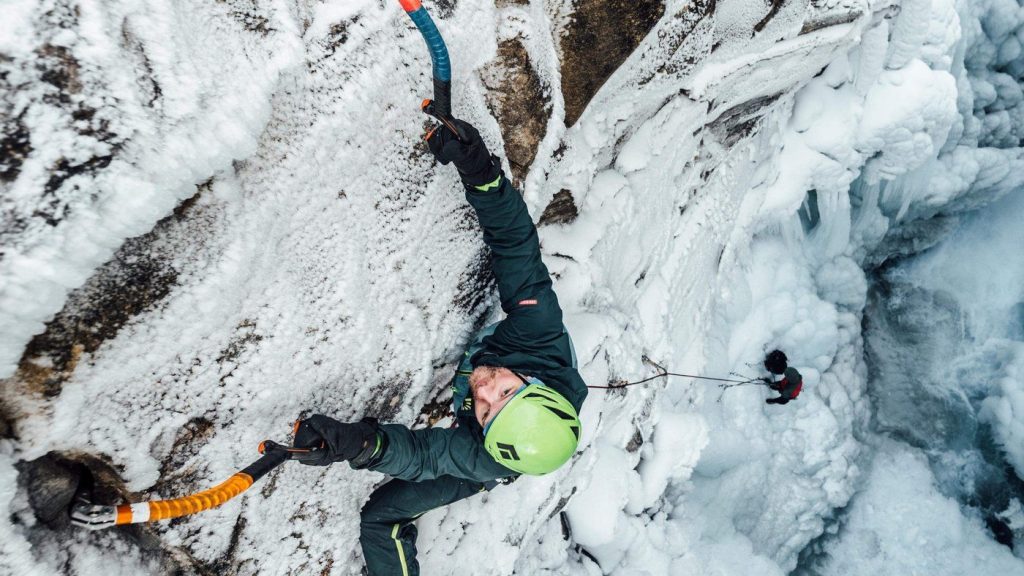Canadian ice climbers bring thriving, nascent sport to world championship in Edmonton

Posted Jan 26, 2025 09:14:27 AM.
Even with a torrent of blood flowing from his mouth, knowing several of his teeth were bent out of place, Gord McArthur believed he could get back on the wall.
Moments before, in the middle of a manoeuvre last February at the Ice Climbing World Cup in Edmonton, the Canadian ice climber was holding an axe handle in his mouth when he fell.
On the way down, one of his ropes caught the tool, driving it into his mouth, fracturing his jaw and displacing his bottom teeth.
“It was … like being curb-stomped by your tool,” said the 45-year-old.
But the pain hadn’tkicked in when officials asked if he wanted to climb his second route. To show he could do it, he stuck his axe in his mouth again.
“When it hit my teeth, I vomited and almost passed out.”
One year, 15 surgeries and some new teeth later, the ice climber from Cranbrook, B.C., is set to return to the world championship in Edmonton’s river valley, where a 21-metre ice wall has been erected for this year’s competition.
The wall, first used for last year’s World Cup but created three years earlier, is a logical choice for hosting the championship, said McArthur.
He said the effort to bring the championships to Canada was spearheaded by Rob Adie, events co-ordinator for the International Climbing and Mountaineering Federation.
The World Cup, set to begin Feb. 27, features a lead-climbing competition, where climbers try making it as far as they can on a dry-surface course, often made of plywood with small, scattered holds.
The lead races rarely end with climbers reaching the end of a course in the time allotted.
There are also speed-climbing competitions, where climbers with hooked axes and crampons race to the top of an ice wall.
A typical move for climbers involves hanging upside down with one leg hooked over an arm for stability, axe in mouth, reaching for the next hold — all while tethered to a ceiling with the point of a curved blade, applying the appropriate mix of force and tension.
“Your mouth essentially acts as a third hand,” said Sara Lilley, an ice climber from Canmore, Alta., who’s in her second World Cup this year and her second-ever ice-climbing competition. She finished one spot from the semi-finals last year.
Lilley said she’s naturally drawn to lead climbing instead of speed climbing.
Lead climbing can result in freak incidents like McArthur’s, she said, but she sees small risks, like getting tangled in ropes or having hard falls.
She said there’s genuine risk in speed climbing, where climbers are known to stab themselves in the forearm or thigh with their picks during the frantic ascent to the top.
“The incidences of people stabbing themselves was more than I think I even realized,” she said.
The relatively nascent sport is still trying to chip its way into the mainstream.
It hasn’t enjoyed the same burst in popularity as rock climbing — a star among the post-pandemic hobbies that have gained traction in recent years. But athletes in ice climbing have felt a surge of interest.
Will Gadd, who won the first-ever lead-climbing championships in 2000 and is one of Canada’s most prolific ice climbers, said the sport has picked up traction with events like the World Cup happening in public spaces.
Canadian climbers at this year’s World Cup are to include McArthur and Lilley, along with others regularly on the professional circuit. More recently, a Canadian team has been formalized under the Alpine Club of Canada, which McArthur said has injected momentum into the sport domestically, allowing it to hold training camps and tryouts.
McArthur, meanwhile, is entering the championship in the midst of what he feels is a rebirth of his career.
“I’ve never experienced something so dark as that injury,” he said.
In his recovery, he spent more time than ever running, a sport he used to hate, and he mountain biked more often. Now fully healed, after competing in ice climbing for 15 years, McArthur said he’s never felt in better shape.
“I’m easily the strongest I’ve ever been.”
The new training stimulus could be a factor, he said. But he thinks it’s something else.
“The mental weight that I’ve been able to work through, through the injury, has made me lighter and faster.”








